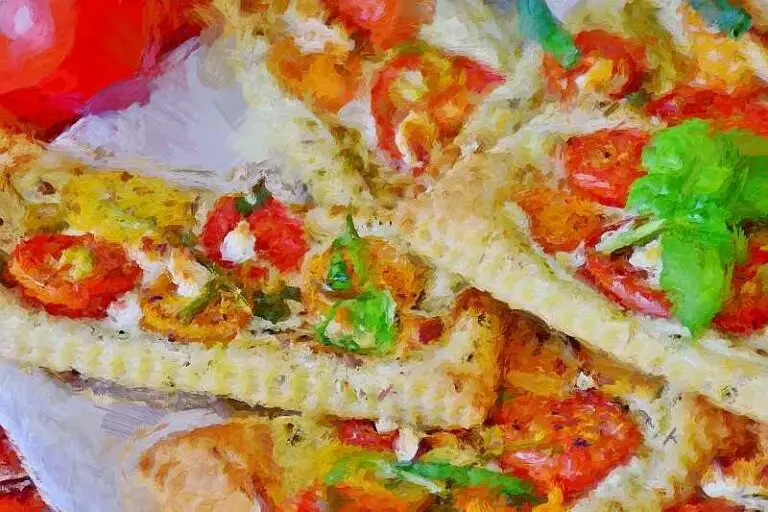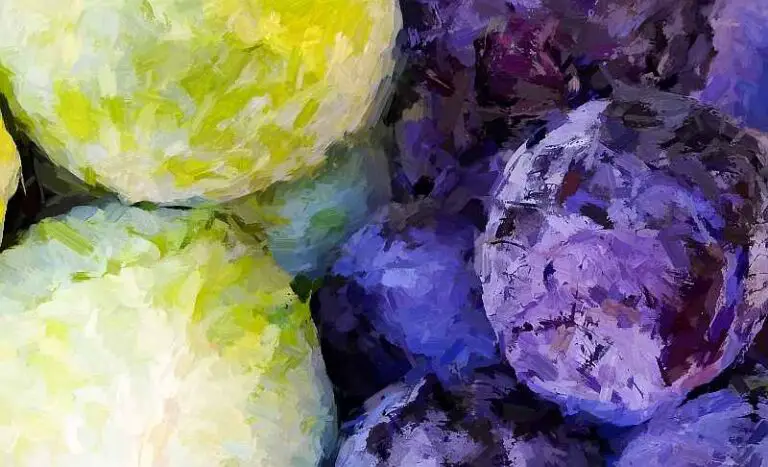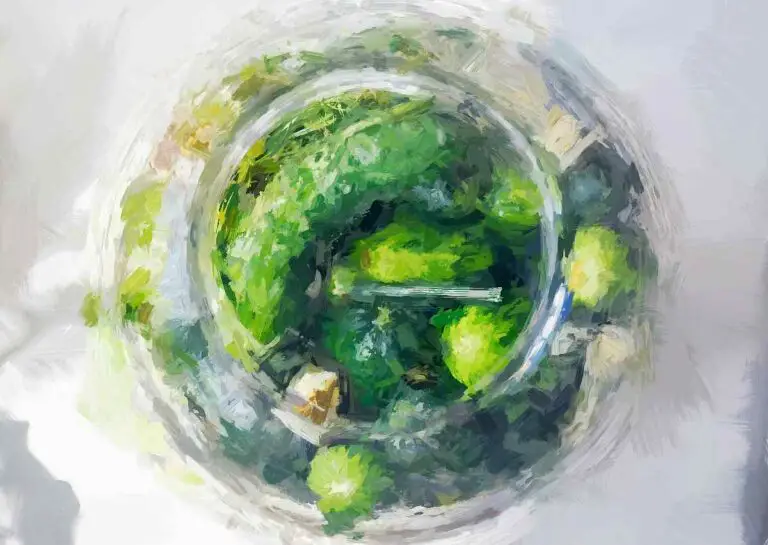Shatta Sauce Recipe – Fermented Green and Red Shatta
Hot or mild, red or green, Shatta sauce is the Middle Eastern chilli sauce you can’t live without.
Shatta is one of my most favourite fermented hot sauces to make and eat.
It’s quick, tasty, delicious and 100% ADDICTIVE.
So addictive that it never really lasts more than a few days in our fridge, so we thought you too would love to learn how to make it and enjoy it.
But let’s start from the beginning.
For those of you who have never heard the words Shatta sauce before here is a quick introduction.
Shatta Sauce – What Is It?
As the name suggests we are talking about a hot sauce, a sauce so famous and common in the Middle Eastern – Levantine area that almost every family has its own version or recipe for it.
It mainly consists of chilli peppers, in fact in some areas it is made as a very salty paste to store and have ready any time it’s needed.
But in other recipes you will see that chillies are not alone and are in fact mixed with tomatoes.
If you are lucky and have some fermented tomatoes handy DO NOT HESITATE to add them, it will be 100% worthy.
The “Shatta World” is divided in two groups: green shatta sauce, made with green chillies such as jalapenos, and red shatta sauce made with red chillies.
Often, though, the two worlds collide in a superb red and green shatta that is DEFINITELY worth trying.
The Right Chillies For The Right Shatta
Before I’ll show you the ( ridiculously ) simple process to prepare it at home, it’s worth mentioning that there is not such thing as a Shatta pepper ( or chilli )
Meaning that everyone is totally free to use their favourite variety, or varieties, of chillies.
If you like your socks to be blown off by the heat go with habaneros or ghost peppers.
But please, if you choose peppers that are so hot make sure you know how to handle them during preparation and, most of all, that you can tolerate them.
If, instead, you are someone like me, who likes some heat but dislikes the side effects that some hot peppers can cause, pick milder varieties like banana peppers, cowhorn or cayenne.
Or any other that you like really: your Shatta, your rules.
And now, let’s see how it is made.
Let’s go.
BASIC SHATTA RECIPE
INGREDIENTS
- 250 gr / half a pound of your favourite chilli peppers
- 1 tbsp of salt
- 1 tbsp of lemon juice
- 3 tbsp of apple cider vinegar
- EVOO
STEPS
- Wash hot peppers and slice them as thin as possible without throwing the seeds away
- Place some in a jar and add some salt, then add some more chillies and again salt. Keep layering and finish with a layer of salt
- Let them sit to ferment for three days
- Drain chillies through a colander or a sieve, add lemon juice and vinegar then place them in a food processor and blitz them to your favourite consistency
- Place the sauce in a glass jar and pour enough extra virgin olive oil to cover the paste and protect it from air
- Seal the jar with a lid and store in the refrigerator
TIPS
After the three days have passed chillies will be very salty; if too salty for your taste feel free to wash them under the tap ( that’s what we do when we make our own ).
Salt will extract water from the hot peppers which will form a brine that is salty, spicy and delicious…Don’t throw it away!!!
We find it to be an incredible addition to soups, pasta sauces, salads and more.
And now that you have made your first batch let’s see how you can properly store it.
Storing Shatta Sauce
If you have followed the steps above and have covered your Shatta with extra virgin olive oil, you have created a barrier that will prevent air (oxygen) from reaching the sauce.
That in itself is a very effective method to avoid spoilage.
So from now on you just need to remember to replenish the oil when you see that the chilli paste is starting to stick out.
Use a jar with a new screw on lid and always keep it refrigerated; this way it should last a month and probably even longer.
This procedure is also effective in preventing ANY chilli paste from going mouldy so keep it in mind for your future preparations.
Shatta – Amazing Ways To Eat It
In the Middle East this type of chilli sauce is often served with falafel or hummus but, if we were to bring it to a western table, some great partners would be eggs, fish and meat.
It’s awesome in sandwiches and hamburgers paired with sauerkraut, a lacto fermented fruit sauce or some pickled watermelon rinds.
As well as being the perfect spicy kick for a pasta sauce or a soup.
Oh…and don’t forget nachos!
To complete the taste bud party pour in your glass some naturally fermented ginger beer or tepache de piña or use it as the hot ingredient in fermented cocktails.
Your mouth will sing!
Shatta Sauce Variations
Now that you have learned how to make the basic version it will be easy to modify your next batch by adding any of your favourite herbs, spices and other vegetables as well.
Some great additions are
- Fermented tomatoes or tomato juice
- Garlic
- Onion
- Parsley or coriander ( cilantro )
- Coriander and cumin seeds
Or you could give Zhug, the famous Yemenite sauce, a try.
As you have probably noticed, this basic recipe involves a very short 3 day fermentation whose primary purpose is to drain water from the chillies.
It also serves the purpose of reducing the risk of spoilage.
Most of the time though, here in our fermenting studio ( aka our kitchen… ) we make Shatta with chillies that have lacto-fermented for a couple of weeks.
We do so because they give the sauce a deeper and more complex flavour we particularly like.
I invite you to try it.
Just slice some chillies of your choice and ferment them in brine before making the sauce.
I promise you will taste the difference.
Another very common way to enrich Shatta is by adding fresh tomatoes either in chunks or after blending them.
Keep in mind that tomatoes ferment very quickly so keep everything submerged by oil and inside the refrigerator.
The Traditional Shatta Sauce
The recipe we shared above is a variation ( some would call it a cheat… ) of the more traditional way of preparing Shatta which we are going to share with you in a minute.
It is a less known version of the Middle Eastern chilli sauce we love and, as tradition often requires, a longer one.
But don’t worry, if you have an oven or a dehydrator and some patience, you too can easily make at home.
It is one of those foods your grandmother would serve at family reunions, everyone would lick their plates and yet she’d never give away her secrets even if you begged!
So, yes.
You are in for a treat.
Buckle up; for this next recipe we are travelling to the heart of Palestine.
Traditional Shatta Sauce – Recipe
This is the traditional recipe.
INGREDIENTS
- 500 gr / 1 lb of red or green chillies
- 1 tbsp of apple cider vinegar
- 1 tbsp of coarse salt
- 125 ml / half a cup of Extra Virgin Olive Oil
- 2 cloves of garlic ( optional )
STEPS
- Preheat your oven to 65 degrees ( 150 F ).
- Wash hot peppers and chop them roughly then place them into a food processor with salt and blend until close to a puree consistency.
- Spread puree on baking paper and put it in the oven to dehydrate for a minimum of 1 hour to a maximum of 10 hours
- Every 30 minutes or so mix the puree and spread again to ensure an even dehydration
- Take the paste out of the oven, let it cool down and mix it with oil, vinegar and garlic ( if you choose to use it )
- Pack Shatta in a jar, cover it with some paper towel and let it ferment at room temperature for up to 4 weeks
- Every now and then give the paste a good stir to release any air bubbles
- When the sauce has reached a flavour profile you are happy with remove the paper towel and substitute it with a screw on lid
- Place the jar in the refrigerator
TIPS
Only use either red chillies or green chillies as you will be making green Shatta or red Shatta but not a mixed version.
You can use a dehydrator instead of the oven
Temperature for this type of fermentation is key, so make sure to keep the jar between 15 and 24 degrees Celsius ( 59 – 75 F ) and away from direct sunlight.
Grandmothers swear it can last up to a year in the refrigerator, but you do you.
Use your nose and eyes to determine if your Shatta has reached the end of its palatable life before consuming it.
And if so, throw it away
And now we are really really curious to know if you have made it and if you enjoyed it!
Tell us, tell us…how long did it last before you devoured it?
One week?
Less????
See you soon.







